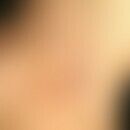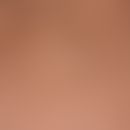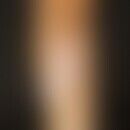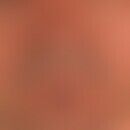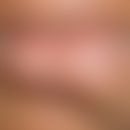Synonym(s)
DefinitionThis section has been translated automatically.
Ointments that can absorb larger amounts of water with emulsion formation. Their bases are anhydrous hydrophobic ointments into which one or more emulsifiers are incorporated. Depending on the type of emulsifier an emulsion of the water-in-oil type (also lipophilic cream or hydrophobic cream) or an oil-in-water emulsion (also hydrophilic cream) is formed. The skin components remain the same for both types of emulsions.
Field of application/useThis section has been translated automatically.
You might also be interested in
IncompatibilityThis section has been translated automatically.
- Peroxide formation due to incorrect storage (protection from light, air and heat) can cause oxidative changes in incorporated active ingredients, which can lead to irritating effects on the skin.
- Incorporation of aqueous solutions of surface-active agents ( Polidocanol, Liquor carbonis detergens) leads to breaking of the W/O emulsion.
- Aluminium chloride, pyrogallol and silver nitrate cause a colour change.
- Oxytetracycline-HCl leads to inhomogeneity and colour change.
Recipe(s)This section has been translated automatically.
Woolwax alcohol ointment DAB (Unguentum alcoholum lanae; syn: Eucerinum anhydricum):
Rp.:
- cetylstearyl alcohol 0,5
- Wool wax alcohols 6,0
- White vaseline 93,5
- S: Gentle greasing of dry skin. Period of use: 3 years
Hydrophilic ointment (DAB) = Unguentum emulsificians aquosum(R212)
Unguentum cetylicum (PH.Helv.)(R274)
Wound ointment (NRF 11.33.)(R283)
TablesThis section has been translated automatically.
Compatibility of drugs in water absorbing ointments
Acridine flavinium chloride 2% |
Dimeticone 10% |
Oleum Thyme 1,5 |
allantoin 0,5% |
Diphenhydramine HCl 2% |
Pheniramine hydrogen maleate 1,25% |
Ammonium bituminosulphonate 10 |
dithranol 0,5 |
Phenol. liquefact. 1% |
Amphotericin B 3% |
Erythromycin 2% |
Pix betulinae 5% |
anthrarobin 2% |
Ethacridine lactate 1% |
Pix juniperi 5% |
azulene 0,2% |
Eucalyptol 10% |
Pix lithanthracis 10% |
bacitracin 500 IU/g |
Gentamicin sulphate 0,2 |
Polidocanol 3% |
Bamipine HCl 2% |
Urea 10% Urea |
Polyvidon iodine 10% |
benzalkonium chloride 0,5%. |
hexachlorophene 0,5 |
Procaine HCl 2% |
Benzocaine 10% |
Hydrarg. sulf. rubr. 1% |
Resorcinol 5% |
Benzoic acid 5% |
hydrocortisone 1% |
Salicylic acid 5% |
Benzoyl peroxide 5% |
hydroxyquinoline sulfate 0,5%. |
Sulphur 5% |
Benzyl alcohol 10% |
potassium iodide 3,5%. |
Sorbic acid 0,1% of |
betamethasone-17-valerate 0,1% |
Camphor 5% |
Sulphadiazine 5% |
Bufexamac 5% |
Cod liver oil 10% |
sulfisomidine 5% |
calcium chloride 5% |
Liq. alum. acet. 20% |
tannin 1% |
cetylpyridinium chloride 0,5 |
Liq. carb. deterg. 10% |
terpiniol 1,5 |
Chloramine T 5% |
Menthol 5% |
tetracaine HCl 0,5 |
Chloramphenicol 1% |
Merbromine 2% |
Tetracycline HCl 1% |
chlorocresol 0,12 |
Methyl salicylate 5% |
Tinctura Myrrh 3% |
Chlorophenoxamine-HCl 1,5% Chlorophenoxamine-HCl 1,5% Chlorophenoxamine |
Lactic acid 5 |
tretinoin 0.1% |
Chlortetracycline HCl 3% |
β-Naphthol 6% |
triamcinolone acetonide 0,1 |
Chrysarobin 5% |
Sodium chloride 10 |
tyrothricin 0,1% |
Clioquinol 5% |
neomycin sulphate 0,5 |
Undecylenic acid 5% |
clotrimazole 1% |
Nicotinic acid benzyl ester 3%. |
Zinc oxide 10 |
dexamethasone 0,1% |
nitrofurazone 0,2% |
Zinc undecylenate 5% |
Dexpanthenol 5% |
Nystatin 100 000 IU/g |
|
Dimetine maleate 1% |
Oleum Pini 1,5 |
|
